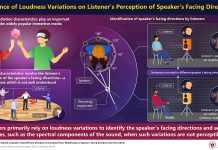
Quantum computers are like the supercharged future versions of the computers we use today.
They have the potential to solve problems that our current computers can’t handle, especially when it comes to understanding the tiny, mysterious world of quantum physics.
Natalia Chepiga, a quantum scientist at Delft University of Technology, is working on making these futuristic machines even better.
She’s come up with a new way to upgrade quantum simulators, which are a special kind of quantum computer, so they can tackle even more complex quantum puzzles. Her research was recently shared in a respected science journal, Physical Review Letters.
Quantum simulators are not just any computers. They’re designed to dive deep into quantum physics questions that remain unanswered, helping us learn more about the universe at its most fundamental level.
These machines could one day change how we do everything, from managing money to keeping information secure and storing data.
For a quantum simulator to do its job well, it needs to be flexible and controllable, much like how a car needs a steering wheel to change directions.
Without this ability to adjust and tune in to different quantum states, a quantum simulator’s usefulness is limited.
Chepiga likens her work to creating a “steering wheel” for quantum simulators. This tool would allow scientists to explore new areas of physics that we’ve only begun to imagine.
The core of Chepiga’s proposal is a new setup for quantum simulators. Typically, these machines use atoms like rubidium or cesium and energize them with a laser to get them into an excited state.
Chepiga suggests using not one, but two lasers of different frequencies to excite the atoms in varied ways. This method would enable the simulator to mimic a broader range of quantum systems.
Think of it like this: if you’ve only ever seen a drawing of a cube on paper, your understanding is limited to that two-dimensional perspective.
But if you can hold a cube in your hand, turn it around, and look at it from all angles, you get a much fuller understanding of its shape. Chepiga’s approach adds new dimensions to what a quantum simulator can explore, like adding more sides to the cube you’re holding.
Simulating the behavior of many particles at once is a huge challenge. Even the most powerful supercomputers we have today struggle with this task because of the sheer number of calculations required. But quantum simulators have a secret weapon: entanglement.
This is a unique feature of quantum particles that allows them to share information with each other in a way that’s impossible in the classical world.
Thanks to entanglement, quantum simulators can handle the complex interactions of many particles, making them incredibly powerful tools for unraveling the mysteries of the quantum realm.
In essence, Chepiga’s work is about pushing the boundaries of what quantum technology can do. By making quantum simulators more versatile, scientists can explore new aspects of the quantum world, leading to breakthroughs we can barely imagine today.
The research findings can be found in arXiv.
Copyright © 2024 Knowridge Science Report. All rights reserved.



